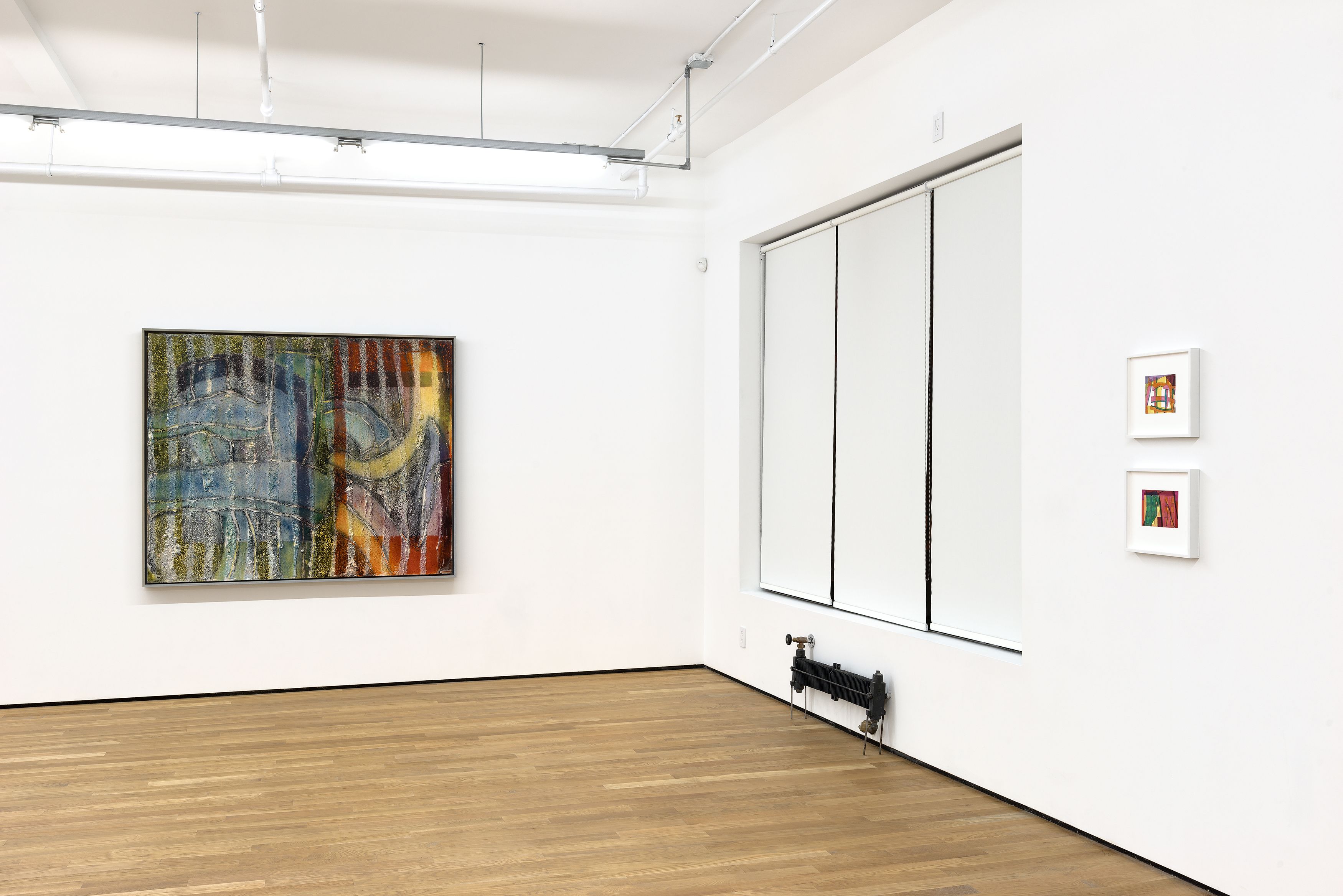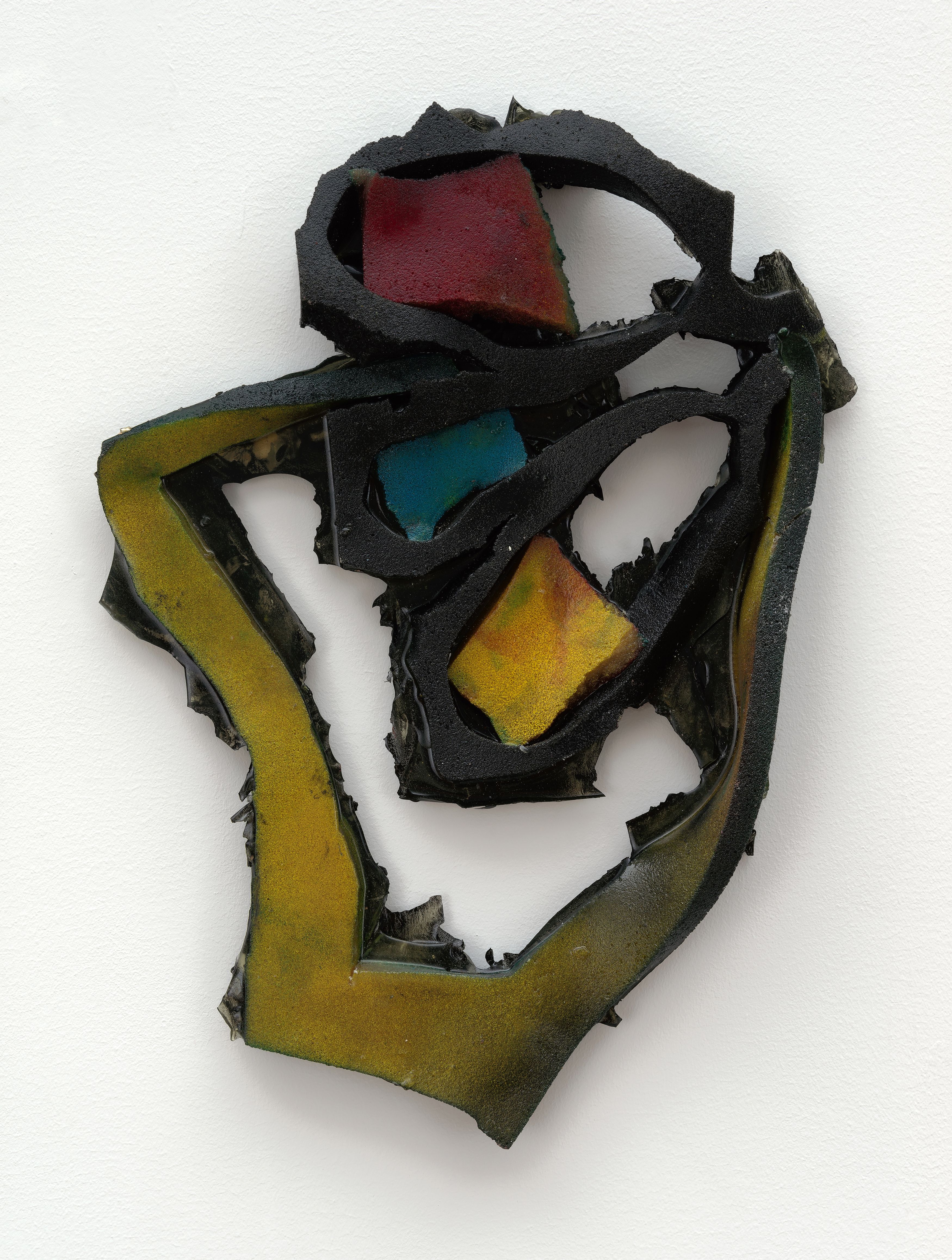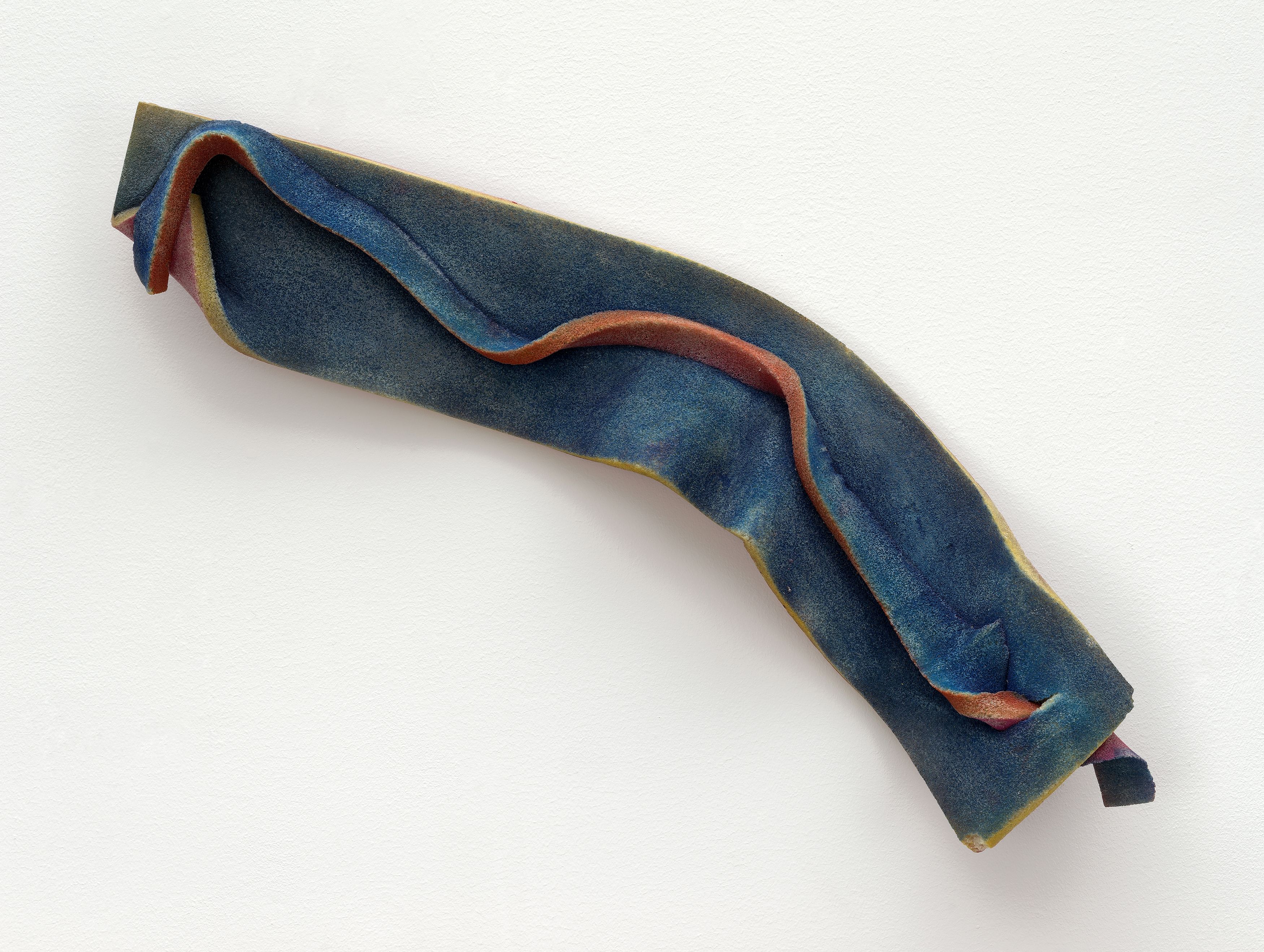Foxy Production is pleased to present Gabriel Hartley’s Reliefs, a new series of paintings, sculptures, and studies on paper. Formal elements – texture, depth, color, and line – override the integrity of images of the city and the body to allow the viewer multiple points of connection. Hartley is concerned with the many ways the painted image can be interpreted; as Jean-François Lyotard has written: ”Painting has little to do with the visible and much to do with the past and future, memory and the possible, acknowledgement and estrangement.”
Hartley’s paintings have vertical fields that intermingle with organic, curved shapes, and luminescent windows. Suggesting buildings, highways, bodies, and the flourishes of graffiti, they take the city as their multilayered subject. Recalling Paul Klee’s architectural paintings, Hartley’s work is an allusive mix of pattern and figuration where the metropolis is inscribed with a psychic power. Not unlike a J G Ballard novel, the city is both landscape and character.
Hartley’s colorful reliefs have a variety of forms and content – some are curved shapes that appear to have jumped straight out of his paintings, some are models of the buildings in his canvases, while others are sculptural framed versions of his paintings. They all seem to be in transition between painting and sculpture, between picture and frame, or between figure and ground.
The artist’s drawings are studies for his paintings and could be seen as portals between his paintings and reliefs. With vivid color, they distill pictorial elements that are then elaborated upon in his paintings.
Tapping into the history of modernist renderings of cities, objects and figures, Hartley transforms the pictorial plane into a meditation on perception. His subjects are dynamic, evolving into view, while also transforming into something else, undergoing what Rosalind Krauss has called the “emergence of the perceptual object to vision.”
CREDITS
Photography: Mark Woods.



















